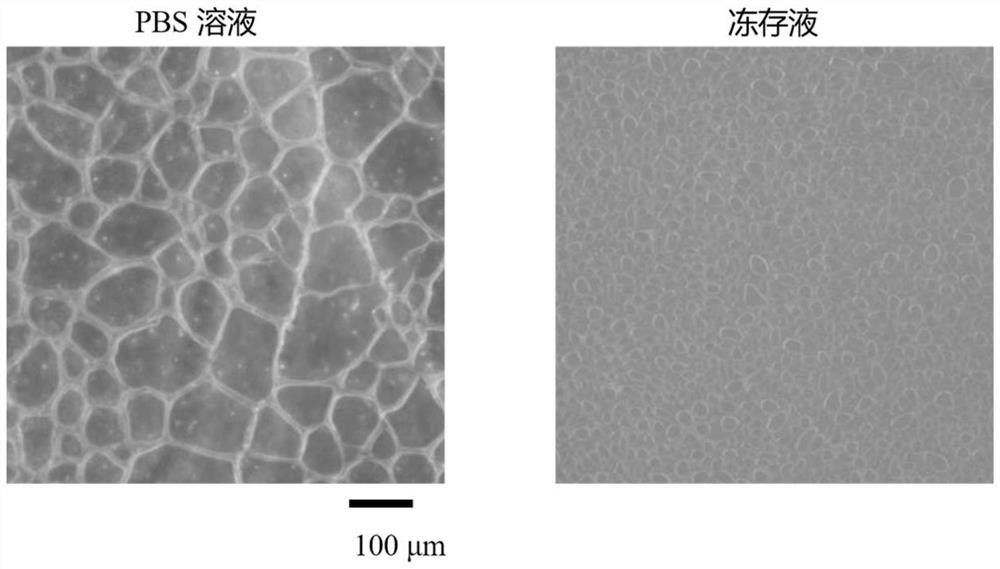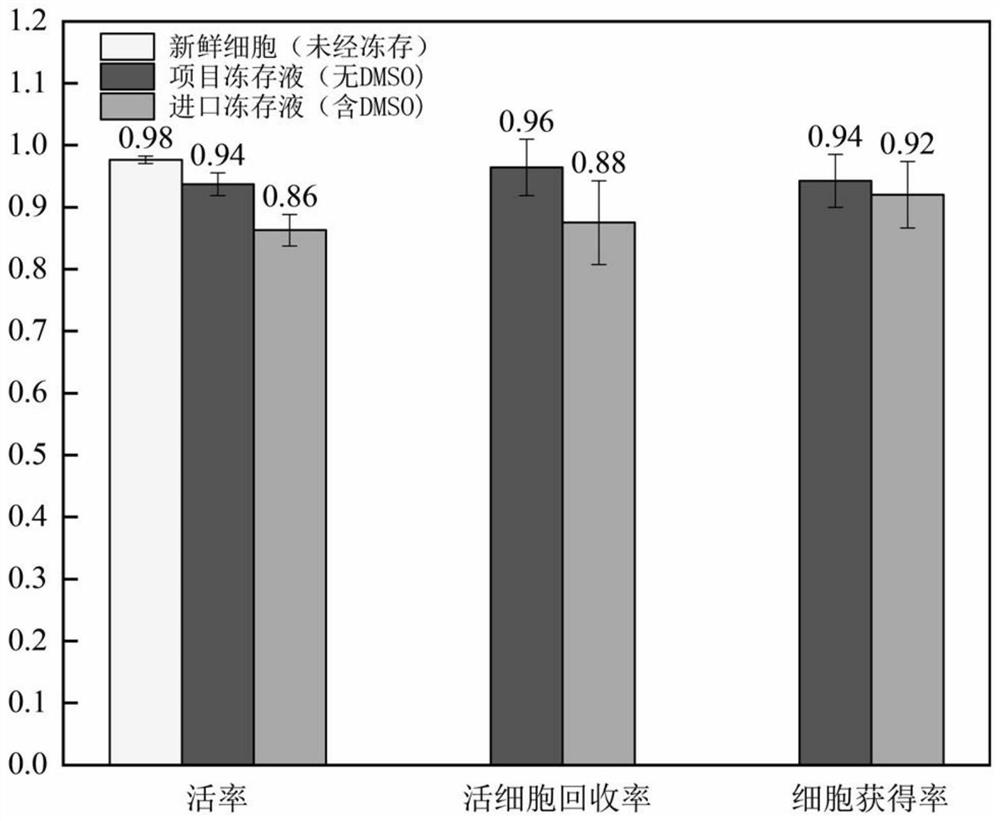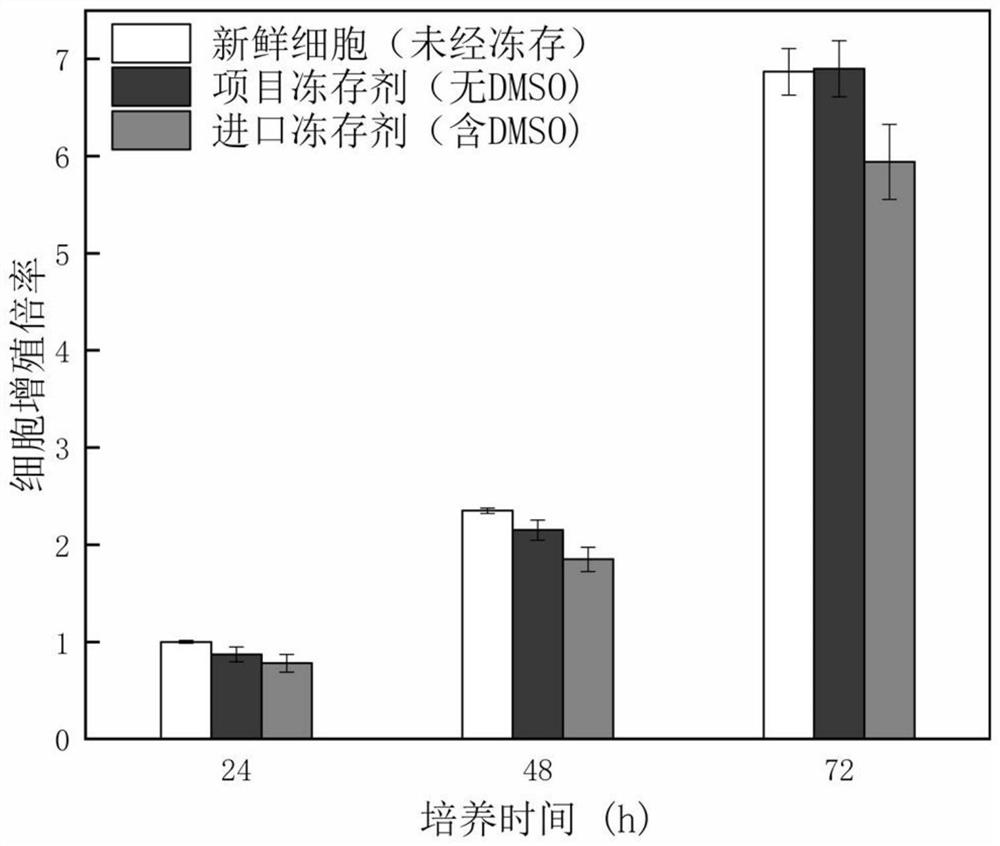Cryopreservation liquid, preparation method thereof and application of cryopreservation liquid in human normal hepatocytes
A technology for cryopreservation liquid and liver cells, which can be used in applications, preservation of human or animal bodies, animal husbandry, etc. It can solve the problem of severe cell damage, poor cell state, lack of ability to control ice crystal nucleation and growth, and inhibit ice recrystallization and other problems, to achieve the effects of reducing production costs, reducing the growth rate of ice crystals, and inhibiting the recrystallization process of ice crystals
- Summary
- Abstract
- Description
- Claims
- Application Information
AI Technical Summary
Problems solved by technology
Method used
Image
Examples
Embodiment 1
[0032] Embodiment 1: This embodiment is illustrated by taking the cryopreservation and recovery of normal human liver cells as an example, but it is not used to limit the scope of the present invention.
[0033] (1) Preparation of cryopreservative: Take 90 mL of water for injection and put it into a beaker placed in a water bath at 4°C, put in a stirrer, and adjust the rotation speed to 500 rpm; add 0.1 g of L-glutamic acid, 0.1 g of sodium alginate, and three 3 g of hydroxymethylaminomethane, stirred for 10 minutes; followed by 5 mL of standard PBS buffer solution, 0.3 g of sodium dihydrogen phosphate and 0.7 g of disodium hydrogen phosphate, and stirred for 30 minutes.
[0034] (2) Cryopreservation of normal human liver cells:
[0035] (S1) Digest the cells in a 10cm culture dish (or T75 culture flask) and grow to a density of 80%-90%, add 2mL of trypsin for digestion, 4mL of complete medium (containing 10% FBS) to stop digestion, collect cell suspension;
[0036] (S2) Cen...
Embodiment 2
[0052] Embodiment 2: This embodiment is basically the same as Embodiment 1, the only difference is that the cell density during freezing is 10 4 cells / mL, 10 5 cells / mL, 10 6 cells / mL, 10 7 cells / mL. The L-O2 cells were cryopreserved according to the cryopreservation solution and the cryopreservation method provided in Example 1. After being frozen in liquid nitrogen for 10 days, the cells were recovered and the cell viability was detected. The results are shown in Table 1.
[0053] Table 1
[0054]
[0055] The results show that the results show that the cell viability of the different cell concentration groups of the test group is within 10 4 cells / m1-10 7 Within the range of cells / mL cell concentration, there was no significant difference.
Embodiment 3
[0056] Embodiment 3: This embodiment is basically the same as Embodiment 1, the only difference is that the cryopreservation agent includes the following components in mass percentage: 0.003% of L-glutamic acid, 0.002% of sodium alginate, trihydroxy 0.04% of methyl aminomethane, 0.2% of sodium dihydrogen phosphate, 0.5% of disodium hydrogen phosphate, 3% of PBS buffer solution, and the balance is water for injection.
PUM
 Login to View More
Login to View More Abstract
Description
Claims
Application Information
 Login to View More
Login to View More - R&D
- Intellectual Property
- Life Sciences
- Materials
- Tech Scout
- Unparalleled Data Quality
- Higher Quality Content
- 60% Fewer Hallucinations
Browse by: Latest US Patents, China's latest patents, Technical Efficacy Thesaurus, Application Domain, Technology Topic, Popular Technical Reports.
© 2025 PatSnap. All rights reserved.Legal|Privacy policy|Modern Slavery Act Transparency Statement|Sitemap|About US| Contact US: help@patsnap.com



